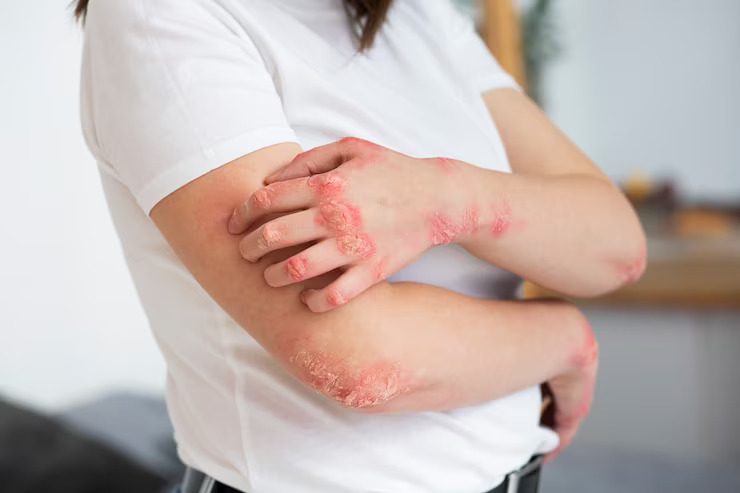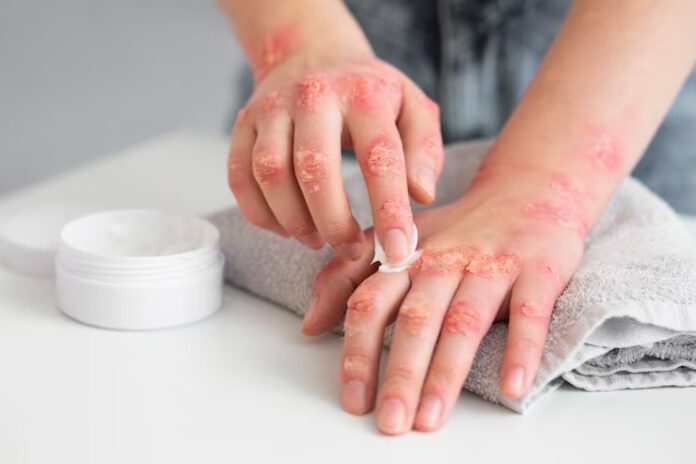Do you find yourself constantly scratching and frustrated with itchy, irritated skin? Spongiotic dermatitis may be the culprit behind your woes. Don’t let this condition dampen your spirits – in our latest blog post, we dive deep into the world of spongiotic dermatitis, exploring its causes, symptoms, and, most importantly, practical solutions to give you the relief you deserve. Prepare to bid farewell to those itchiness blues as we uncover helpful tips and expert advice to bring back smoothness and harmony to your skin. So please sit back, relax, and let us guide you toward a happier and itch-free journey!
Introduction to Spongiotic Dermatitis
You may suffer from spongiotic dermatitis if you have itchy, scaly skin. This type of eczema is characterized by tiny fluid-filled bumps that form under the skin. The nodes are often itchy and can be painful if they become infected. Spongiotic dermatitis can be a chronic condition that can come and go throughout your life. There are treatments available that can help to control the symptoms and keep the situation under control. This article looks closely at spongiotic dermatitis, its symptoms, and some practical solutions for managing it.
Causes of Spongiotic Dermatitis
There are many potential causes of spongiotic dermatitis, and the exact cause can vary from person to person. Potential causes include:
– allergies (food, environmental, or others)
– exposure to irritants (such as certain soaps, detergents, or chemicals)
– skin conditions (like psoriasis or eczema)
– infections (bacterial, viral, or fungal)
– autoimmune conditions (such as lupus erythematosus or Hashimoto’s thyroiditis)
If you suspect you may have spongiotic dermatitis, you must see a doctor or other healthcare provider for proper diagnosis and treatment.
Symptoms of Spongiotic Dermatitis
Spongiotic dermatitis is a skin condition characterized by itchy, red bumps. The bumps are often filled with fluid and may be accompanied by scaling or flaking of the skin. Blisters may also develop in particular circumstances.
Although the specific origin of spongiotic dermatitis is uncertain, a hyperactive immune system is likely to be a contributing factor. This overactivity causes the body to attack healthy skin cells, leading to inflammation.
Spongiotic dermatitis most commonly affects adults between the ages of 20 and 40. It is more common in women than men and is more likely to occur in people with allergies or other inflammatory conditions such as eczema.
There are several different symptoms of spongiotic dermatitis, which can vary in severity from person to person. The most common symptom is itchiness, ranging from mild to severe. Other symptoms include redness, swelling, scaling, flaking, and blistering. These symptoms usually appear on the face, scalp, chest, or back but can occur anywhere. In some cases, the bumps may ooze clear fluid or bleed.
While there is no cure for spongiotic dermatitis, there are several ways to manage and control the symptoms. Moisturizers and anti-inflammatory medications can help to soothe itchiness and redness, while corticosteroid creams can help to reduce swelling and inflammation.

Diagnosis and Treatments for Spongiotic Dermatitis
Spongiotic dermatitis is an itchy skin condition caused by an accumulation of fluid in the skin. The most common symptom of spongiotic dermatitis is a red, itchy rash that can occur anywhere on the body but is often found on the face, scalp, trunk, or legs. The rash may sometimes additionally blister or leak.
Several things can cause spongiotic dermatitis, including allergies, insect bites, and certain medications. However, the most common cause is eczema, a chronic skin condition that causes dryness, irritation, and inflammation.
There is no cure for spongiotic dermatitis, but several treatments can help relieve symptoms and prevent flare-ups. These include:
• Topical corticosteroids:
These anti-inflammatory medications can be applied directly to the affected area to reduce swelling and itching.
• Oral corticosteroids:
These are more potent anti-inflammatory medications that are taken by mouth. They may be prescribed for more severe cases or those who do not respond to topical treatment.
• Antihistamines:
These can help to relieve itchiness by blocking histamine receptors.
• Phototherapy:
In order to alleviate inflammation, this entails shining UV light on the diseased region.
• Immunosuppressants:
These drugs suppress the immune system and are typically only used in severe cases that do not respond.
Natural Remedies for Spongiotic Dermatitis
Many natural remedies for spongiotic dermatitis can help alleviate the symptoms of this condition. Some of these remedies include:
1. To the afflicted area, apply a cold compress. This may calm the skin and lessen irritation.
2. Take an oatmeal bath. The anti-inflammatory qualities of oatmeal may aid to soothe the skin.
3. Using a moisturizer like coconut oil to hydrate the skin and prevent further irritation.
4. Avoiding trigger foods or substances that may worsen your symptoms. Common triggers include dairy, gluten, and nuts.
5. Taking an antihistamine to help reduce itching and swelling.
6. Applying a topical corticosteroid cream to help reduce inflammation.
Prevention of Spongiotic Dermatitis
Spongiotic dermatitis is a skin condition characterized by itchiness, redness, and swelling. Several things, including allergies, irritants, and autoimmune diseases, can cause it. While there is no cure for spongiotic dermatitis, there are ways to prevent it or control its symptoms.
There are a few things you can do to prevent spongiotic dermatitis from developing:
Avoid known allergens and irritants.
If you know that certain substances tend to cause your skin to flare up, it’s best to avoid them.
Keep your skin moisturized.
Dry skin is more susceptible to irritation and inflammation, so keeping it hydrated will help reduce your risk of developing spongiotic dermatitis.
Wear protective clothing.
If you know you’ll be exposed to potential triggers for your condition, such as chemicals or pollutants, it’s essential to wear gloves or other protective clothing to minimize exposure.
If you already have spongiotic dermatitis, several treatments can help relieve your symptoms and keep the condition under control:
Topical corticosteroids.
When applied directly to the affected area, these medications can reduce inflammation and itching.
Oral antihistamines.
These drugs can help relieve itching by blocking the histamine response in the body. They may also help with any associated coughing or wheezing.
Conclusion
Spongiotic dermatitis can be challenging to live with, but the good news is that several effective treatment options are available. With proper medical advice and diligent skincare practices, it’s possible to bring control over symptoms and get a handle on this skin condition. It’s also essential to stay informed on how your body responds and reacts to treatments to determine what works best for you. Remember to prioritize self-care when dealing with spongiotic dermatitis to keep yourself healthy and feeling your best!
Frequently Asked Questions (FAQs)
1: What is spongiotic dermatitis?
Spongiotic dermatitis is an eczema that causes itchy, red, inflamed skin. It is also known as spongiotic eczema or spongiotic contact dermatitis.
2: What are the symptoms of spongiotic dermatitis?
The symptoms of spongiotic dermatitis include itching, redness, and skin inflammation. The affected area may also be weepy or crusty.
3: What causes spongiotic dermatitis?
Spongiotic dermatitis is usually caused by an allergic reaction to something that has come into contact with the skin, such as a chemical, cosmetic, or detergent. It can also be caused by irritants such as pollution or smoke. Sometimes, it may be due to an underlying medical condition such as atopic eczema or psoriasis.
4: How is spongiotic dermatitis diagnosed?
Spongiotic dermatitis is usually diagnosed based on the symptoms and history of the condition. A physical examination may also rule out other states with similar symptoms. Sometimes, a skin biopsy may be needed to confirm the diagnosis.

